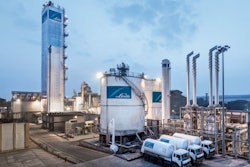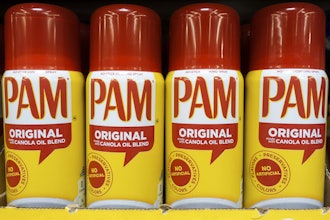Almost every product on the consumer or industrial market has spent time sitting on a pallet. The humble pallet is the device that allows easy forklift access to goods and expedites the loading and unloading of freight worldwide. Pallets come in a variety of materials. Wood (including wood byproducts) is the most popular choice, making up 95 percent of worldwide pallet usage. Plastic and metal pallets constitute the remaining 5 percent of the market.
As a manufacturer of pallets, we are often asked, “How do I choose the best pallet for me?” The answer will depend on your business’s prioritization of strength, durability, sanitation and value.
Wooden Pallets
For most applications in which sanitation is not a top concern, wood offers the strength and low up-front cost to fit most shipping and warehouse needs. Wooden pallets are relatively inexpensive, universally available and sustainable. From purely a price standpoint, it makes sense that wooden pallets dominate the market. Every cost of production and delivery must be borne by the final consumer, so the choice to use wooden pallets is driven by the need to be competitive.
Wood provides some other unique advantages for pallets. Because wooden pallets are assembled from lumber cut to size, it is very easy for manufacturers to build custom pallets with a quick turnaround time. Another advantage of the wooden pallet is the varying strengths that can be delivered by using thicker boards or by shifting from softwoods, such as pine, to hardwoods such as oak. This flexibility creates a huge advantage for wood in terms of response time and low startup costs for customized designs.
Metal Pallets
Wooden pallets might be strong and affordable, but they certainly have their limits. If your pallets need to hold more than 4,000 pounds, or if long-term durability is a high priority for your business, metal pallets are a better choice. Operations that require pallets to be stored outside often choose metal pallets over other alternatives, because metal can withstand natural elements, including rain and UV rays, without rotting like wood.
In comparison to wood and plastic, metal can function over the widest range of temperatures. Metal pallets will not burn, so they make sense for environments rich in flammable materials. Metal also has the best performance in extremely cold environments whereas both plastic and wood become more brittle. Because metal is hard to contaminate and easy to clean, these pallets also find a home in some clean room applications.
Metal pallets are most commonly available in two varieties: steel and aluminum. Choosing between the two depends on whether cost or weight is a bigger concern for your business. Aluminum pallets have a higher price tag but tend to be the preferred option when a lightweight, yet strong, pallet is needed for shipping airfreight. As noted above, the cost of pallets impacts the final cost passed on to customers. So when rapid delivery requires shipping by air, the relative lightness of an aluminum pallet is a money-saver. Aluminum also becomes an option in applications where there is moisture present, because it will not rust like steel pallets.
Business operations that require strength and durability without the concerns of airfreight costs and/or consistent moisture will likely receive the greatest value when choosing steel pallets. Both aluminum and steel pallets should be used in a closed-loop supply chain in order to reap long-term savings.
Plastic Pallets
We know wood is a good option for businesses most concerned with up-front cost and payloads of 4,000 pounds or less. And we know that metal pallets are the best option for businesses involved in airfreight and/or extreme load capacity. So, where do plastic pallets fit in all this? We have found that plastic pallets — especially those manufactured by rotational molding — are the best fit for operations that are primarily concerned with durability and sanitation.
The average life of rotomolded plastic pallets is significantly longer than that of wooden pallets, which have a tendency to crack and splinter. But perhaps the most salient factor in the choice of plastic over wood is a growing concern surrounding the fact that wooden pallets have been shown to carry moisture, toxic chemicals, insects, bacteria and pathogens. Add to this the fact that wooden pallets often end up with sharp splinters or protruding nails that can puncture food packaging, and you can readily see why smooth, easy-to-clean plastic pallets have become popular in the food processing and pharmaceutical industries.
Even more concerning is the knowledge that many tests over the past 10 years have shown that an alarming percentage of wooden pallets collected at food processing and retailing locations contained high levels of E. coli, listeria or salmonella. In an effort to minimize the possibility of contamination, most pharmaceutical companies now forbid wooden or cardboard pallets from entering their facilities.
When comparing plastic pallets to metal ones, both materials are very durable. But metal pallets are assemblies of multiple components, resulting in joints that are susceptible to weakening over time. Plastic pallets are molded from one continuous piece of material, which makes them more resistant to stress and impact. Additionally, plastic pallets are typically more affordable than those constructed of metal. As is the case with metal pallets, businesses must be able to maintain control of plastic pallets in a closed-loop system in order to realize the significant savings these pallets provide.
About The Author: Peter Connors is the President of Remcon Plastics, Inc., a plastics manufacturer in the custom molding, material handling and safety products industries.






















